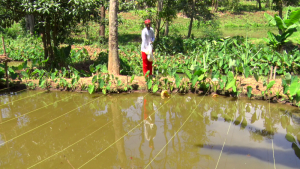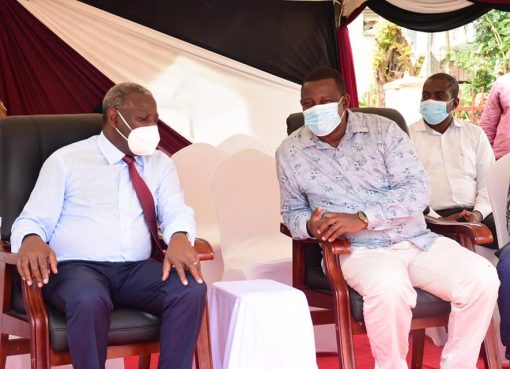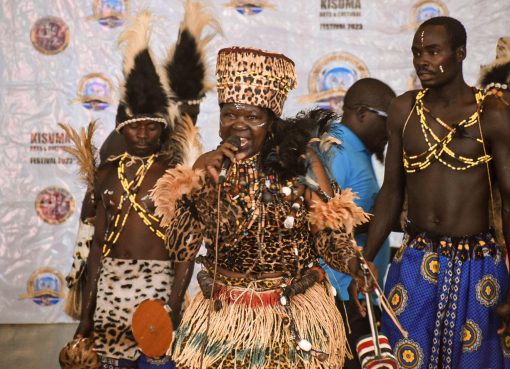Fish farming in Migori County and the larger Nyanza region has been a major livelihood activity that contributes to the socio-economic development agenda of the region.
However, the activity, which has for a long time been focused only on areas around Lake Victoria, has seen communities living along the lake shores engage in serious fishing, depriving those living inland of the opportunity to engage in the venture.
The introduction of fish ponds in the country in the 60s through a rural farming initiative campaign dubbed ‘eat more fish’ however triggered a gradual increase by inland residents in Nyanza and the country at large to embrace the venture seriously.
In Migori County alone, the fishing activities have been largely carried out in Nyatike Sub County, the only area that borders Lake Victoria to the south.
The limitation of access to the lake in the county has forced a majority of willing fish farmers to embrace modern methods of practising fish farming through ponds.
Peter Sambusa, a resident of Kuria West Sub County says that fish farming has generated for him a lot of wealth since he started the venture five years ago.
Although Sambusa started fish farming in the late 90s, the interventions from the national and county governments in collaboration with development partners like the Agricultural Business Development Programme (ABDP) enabled him to start improved fish production in 2019.
His aquaculture farm has six ponds stocked with between nine to 13 thousand fiingerlings, comprising of Mudfish and Tilapia fish that is harvested every six to eight months.
The fish enterprise has enabled Sambusa to generate up to Sh120,000 per harvest. The proceeds from his ponds has encouraged him to diversify into other income-generating activities like beekeeping, vegetable growing and poultry farming.
“Aquaculture has given me so much income that I am now able to diversify to other enterprises to fully utilise the potential of my farm,” Sambusa said during our recent visit to his farm.
He says that at first, the fish farming work was just for fun to keep himself busy as he utilised his swampy piece of land located at a nearby water stream.
However, good intentions from both the national and county governments and developing partners that has continued to completely re-shape fishing activities in the county has encouraged him to redouble his efforts in growing fish. He adds that fish farmers in the region have been empowered economically by both levels of governments through ABDP by providing farmers’ groups with equipment like feed formulation machines, predator nets and pond liners to improve their fish ponds.
The farmer acknowledges that other support from partners including improved fingerlings, market links and aquaculture trainings, have continued to boost their fish production.
Advanced and improved fish farming technologies to modernised fish ponds, inland reservoir ponds, dams, and fish cage farming, are some of the revolutionary farming mechanisms that continue to attract local residents to venture into aquaculture.
According to Sambusa, well-established markets from locals, the changing eating habits with an appetite for fish from the Kuria community and the establishment of a Rio Fish Market Limited firm have provided a marketing platform for fish farmers.
Fredrick Otieno, a resident of Rongo Sub County says that the introduction of fish ponds on his farm has enabled him to increase his income from fish sales.
Otieno who has one fish pond measuring 300 meters square disclosed his intention of increasing fish ponds to reap more from the promising venture.
He admits that the proceeds from fish will enable him increase his daily farming as well as allow him increase his sugarcane acreage, a farming venture he has also diversified to.
Otieno who started the fish venture in early 2020, says that well-established cooperatives, farmers’ groups, supportive institutions like ABDP and the two levels of Governments’ goodwill, have provided them with the necessary skills and market linkages which, have made the venture a lucrative business idea.
“If you have a link to the market and people who culturally are fish eaters, then venturing in aquaculture becomes a turning point in wealth creation”, says Otieno.
Already Otieno and some of his community members have formed a fish farmers’ group with more than 30 members to socially and economically empower themselves through aquaculture enterprising.
Samora Mwamba, another fish farmer from Suna West Sub County concurs that fish farming has propelled him to higher heights in terms of income generation.
Mwamba, who has eight different ponds, the raised concrete fish pond, earth dam fish pond and fish pond liner, says that the skills acquired from training organised by Migori County and ABDP have enabled him to acquire aquaculture management skills that increased his fish production.
Mwamba, who has 1,000 fish stock in each of his eight ponds says that the ponds have the capacity to produce 500 to 600 kilogrammes of fish every six to eight months.
He however notes that he intends to utilise the income generated from the venture to stock each pond with at least 3,000 fish to enable him to harvest monthly.

“Because this venture is paying well, I am planning to re-invest the profit back into the enterprise by developing eight additional ponds to harvest fish every month,” Mwamba asserted.
The fish farmer says that consistency in fish production is very important and that is the reason he wants to expand the venture for a monthly production.
His farm has been a training centre for grooming and nurturing more than 35 fish farmers within his locality through the Wasweta II Fish Self-help group.
Mwamba has also invested in a feed formulation machine and manual miller to reduce his cost on fish feeds.
“I am growing my own fish feed ingredients like millet, soya, maize and sunflower to reduce the cost of overlying on commercial feeds to reduce production costs and maximise my profits,” explained Mwamba.
The availability of the market is what is encouraging fish farmers like Mwamba to venture more into fish farming.
He notes that fish is a perishable commodity and the availability of a ready market is crucial to both the farmer and the seller.
The Migori County government is in the process of establishing refrigerated places commonly known as (Smart kiosks) within the marketplaces to boost the production of fish as well as widen the market for its potential fish farmers.
By Geoffrey Makokha & George Agimba




